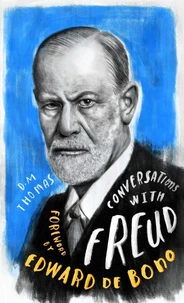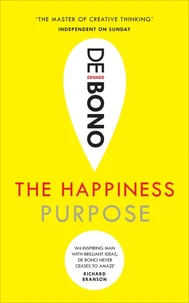The Mechanism of Mind. Understand how your mind works to maximise memory and creative potential
Par :Formats :
Disponible dans votre compte client Decitre ou Furet du Nord dès validation de votre commande. Le format ePub protégé est :
- Compatible avec une lecture sur My Vivlio (smartphone, tablette, ordinateur)
- Compatible avec une lecture sur liseuses Vivlio
- Pour les liseuses autres que Vivlio, vous devez utiliser le logiciel Adobe Digital Edition. Non compatible avec la lecture sur les liseuses Kindle, Remarkable et Sony
- Non compatible avec un achat hors France métropolitaine
 , qui est-ce ?
, qui est-ce ?Notre partenaire de plateforme de lecture numérique où vous retrouverez l'ensemble de vos ebooks gratuitement
Pour en savoir plus sur nos ebooks, consultez notre aide en ligne ici
- Nombre de pages352
- FormatePub
- ISBN978-1-4735-2757-7
- EAN9781473527577
- Date de parution02/07/2015
- Protection num.Adobe DRM
- Infos supplémentairesepub
- ÉditeurEbury Digital
Résumé
The Mechanism of Mind presents Edward de Bono's original theories on how the brain functions, processes information and organises it. It explains why the brain, the 'mechanism', can only work in certain ways and introduces the four basic types of thinking that have gone on to inform his life's work, namely 'natural thinking', 'logical thinking', ' mathematical thinking' and 'lateral thinking'. De Bono also outlines his argument for introducing the word 'PO' as an alternative to the word 'NO' when putting lateral thinking into practice.
Drawing on colourful visual imagery to help explain his theories and thought-processes, from light bulbs and sugar cubes to photography and water erosion, The Mechanism of Mind remains as fascinating and as insightful as it was when it was first published in 1969. This is a must-read for anyone who wants to gain a greater understanding of how the mind works and organises information - and how Edward de Bono came to develop his creative thinking tools.
Drawing on colourful visual imagery to help explain his theories and thought-processes, from light bulbs and sugar cubes to photography and water erosion, The Mechanism of Mind remains as fascinating and as insightful as it was when it was first published in 1969. This is a must-read for anyone who wants to gain a greater understanding of how the mind works and organises information - and how Edward de Bono came to develop his creative thinking tools.
The Mechanism of Mind presents Edward de Bono's original theories on how the brain functions, processes information and organises it. It explains why the brain, the 'mechanism', can only work in certain ways and introduces the four basic types of thinking that have gone on to inform his life's work, namely 'natural thinking', 'logical thinking', ' mathematical thinking' and 'lateral thinking'. De Bono also outlines his argument for introducing the word 'PO' as an alternative to the word 'NO' when putting lateral thinking into practice.
Drawing on colourful visual imagery to help explain his theories and thought-processes, from light bulbs and sugar cubes to photography and water erosion, The Mechanism of Mind remains as fascinating and as insightful as it was when it was first published in 1969. This is a must-read for anyone who wants to gain a greater understanding of how the mind works and organises information - and how Edward de Bono came to develop his creative thinking tools.
Drawing on colourful visual imagery to help explain his theories and thought-processes, from light bulbs and sugar cubes to photography and water erosion, The Mechanism of Mind remains as fascinating and as insightful as it was when it was first published in 1969. This is a must-read for anyone who wants to gain a greater understanding of how the mind works and organises information - and how Edward de Bono came to develop his creative thinking tools.






















